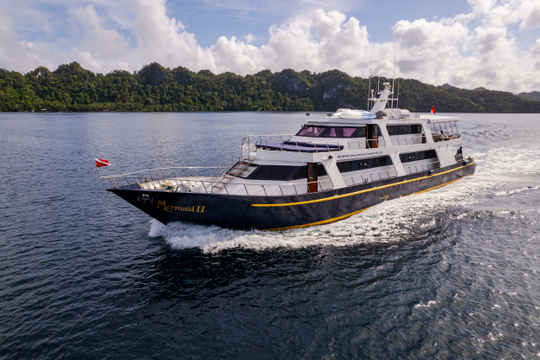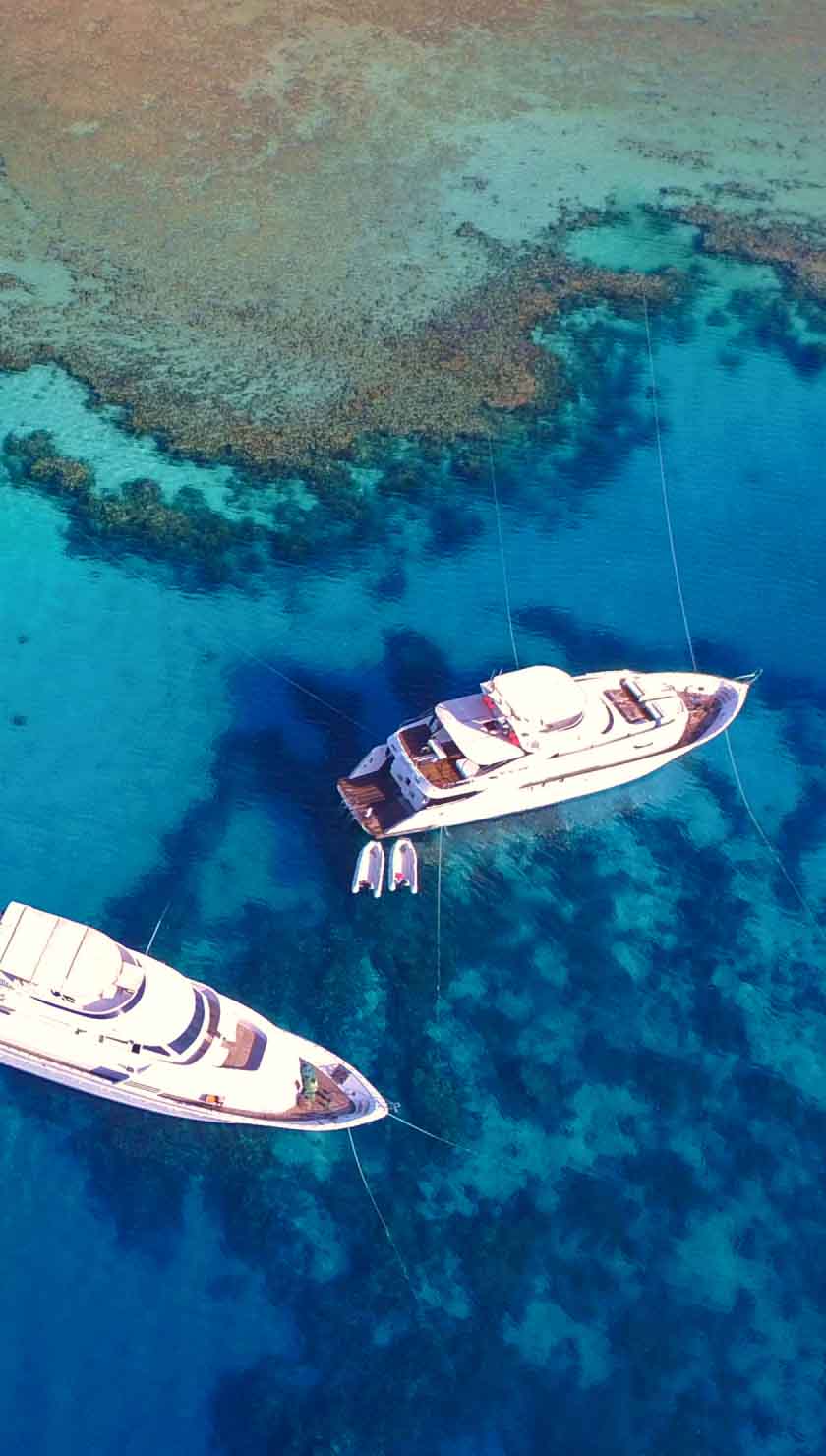Marine life in Komodo
Komodo diving is some of the most prolific, in terms of species count, in all of Indonesia. So far, over 260 species of reef building corals have been identified, 70 species of sponges, and over a staggering 1000 fish species. Just naming a few, you are likely to see manta rays, ocean sunfish, pygmy seahorses, ornate ghost pipefish, the highly venomous blue ringed octopus, eagle rays, and even dolphins! All this life is supported by prominent tidal changes and very fast currents that originate from deeper, cooler waters. They hold in suspension an incredible amount of nutrients and planktonic organisms that essentially act like fertilisers for reefs. This huge injection of nutrients and biomass is responsible for sustaining the abundant number of species in Komodo, and maintaining a very healthy ecosystem.
Best dive sites in Komodo
Batu Balong is a huge pinnacle just to the west of Komodo Island. Its base reaches a depth of 250 feet (75 m), and is therefore primarily a wall dive. Fisherman have generally avoided this area due to the rocky terrain and exceptionally strong currents, leaving Batu Balong in absolutely pristine condition. Scuba diving deeper, you are likely to see huge Napoleon wrasse and whitetip sharks, while hundreds of reef fish can be seen at shallower depths.
Appropriately named, Manta Alley consists mainly of several channels that attract manta rays. The rocks are lined with bright orange soft corals, which are now home to a wide variety of invertebrates including harlequin shrimp. The channels lie in a depth of 60 feet (18 m), where you can spot giant trevallies, barracuda, and if youíre lucky, the black spotted ribbontail ray.
Cannibal Rock is perhaps one of the best dive sites in Komodo. It is an all-round beautiful site to go scuba diving in, and holds green turtles (the most endangered of all the sea turtles), pygmy seahorses sat upon purple gorgonian fans, blue anemones and incredible shoals of fusiliers.
Best time to dive in Komodo
It is possible to go on a Komodo diving cruise all year around; in part thanks to the glorious tropical climate, but also thanks to the highly capable team of management workers who maintain the quality of the dive sites.
Dry season lasts from April until November, whilst the busiest period is from April until August. The best weather is during the dry season. Seas are relatively flat and there is virtually no rain. Rainy season is from November until March, and when winds pick up slightly and the area receives the majority of its annual rainfall.
Average water temperatures depend on whether you are diving towards the north or south of Komodo National Park. Water temperatures towards the north are warmer, reaching a high of 82 Fahrenheit (28°C); while to the south, water temperature can be as low as 68 Fahrenheit (20°C).
Manta rays can be seen all year round, although they are seen in higher frequency during December and February, while the best time to see ocean sunfish (also known as Mola mola) is August.
Visibility is at its best between November and March, reaching in excess of an impressive 100 feet (30 m), while during July and August visibility reduces as deep currents rise, carrying large amounts of nutrients. The benefit of this is that the reefs are at their most active during this time.
Experience level for diving Komodo
For anyone that wants to go scuba diving in Komodo, it is recommended that they hold an intermediate or advanced certification. The very strong currents and shifting tides can be overwhelming for beginner divers.
How do I get to Komodo
Indonesia liveaboards taking you to the Komodo National Park will typically set sail from either Benoa, Labuan Bajo, or Bima.
Benoa Harbour is located on the island of Bali, just a short drive from Ngurah Rai International Airport. International direct flights to Bali are becoming more frequent, although there are currently no direct flights when travelling from Europe. One must usually connect through Bangkok or Kuala Lumpur.
Labuan Bajo is easily reached from several locations within Indonesia, but for most, catching a flight from Ngurah Rai Airport in Bali will be the most straightforward option. To reach Bima, it is also advised to catch a plane from Bali to Sultan Salahuddin Airport, located in the southern outskirts of Bima. From these airports, it is a short drive to their respective harbour from where dive tours in Komodo will depart from.

















